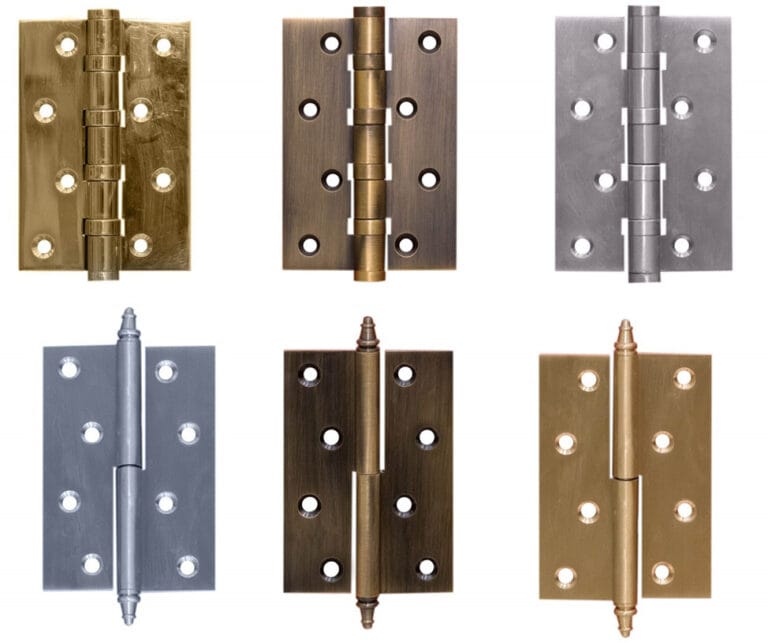A sliding barn door can add a lot of rustic charm to your home as well as functionality, but there’s one major drawback. They are much more complicated to install than your standard interior door.
This can be a problem if you skip installation fees or order your door from a retailer that doesn’t offer installation.
To help with that, here is a step-by-step guide anyone can follow to perfectly install interior barn doors in any room, walk-in closet, etc.
What You’ll Need When Installing Barn Door
Before we get to the step-by-step guide, you will need a few basic tools to get the job done.
A buddy: These doors are heavy, and you’re going to have to hang them, hold them level, and attach them all at once. A buddy or two will help tremendously.
A stud finder: You don’t technically have to have one of these, but they’re cheap, and they’ll make finding studs a breeze for the inexperienced.
A drill with bits and driver bits: You’ll need to drill pilot holes and fasten hardware. The easiest and fastest way to do this is with a cordless power drill, some drill bits, and driver bits. If you don’t have one, it’s well-worth the cost, and you’ll use it for much more than just the door installation.
Beyond that, you can also use a pencil for marking your pilot holes for accurate drilling.
Step-By-Step Installation for Barn Doors
Let’s assume your new door has just arrived, you have your installation buddies and tools, and you’ve already removed any existing door system in the way. Now, it’s time to install your door.
Keep in mind that different barn door designs will vary slightly. So, you’ll want to use this as a primer, and then refer to the installation manual that came with the door to see if there are any specific details for the door you purchased.
1. Add Hardware to the Door
It’s a lot easier to start by adding the hardware that attaches to the door, first. You have more flexibility with lining things up, you can do everything with the door on the floor instead of holding it up, and it’s simply easier to work with.
2. Install the Hanger Board
This is a step that not all of you will need to follow. A hanger board, or otherwise known as a header board, is an extra support board on the top of the door to help distribute its weight.
If yours needs it, this is the time to install it. Otherwise, you can skip this step. Installing it is as easy as drilling your pilot holes and fastening the board. If it’s a metal mounting board, the drilling process is slightly more difficult, but it is functionally the same. Just make sure you use the right drill bits.
3. Measure the Track
Your sliding barn door is going to glide back and forth along a track mounted on the wall. At this point, you need to measure the length of the track that will be used to allow your barn door to fully open and close properly.
If you’re using a commercially-available kit, this should be the right length already. If you bought the track separately and used a reclaimed wood door, you might need to cut the track to length. If you need to cut it, a hacksaw or powered saw with a metal cutting blade will do the trick nicely. Just make sure you don’t shorten the track too much. You can’t add metal back on, but you can always remove more.
You should also ensure that the track is installed at the appropriate height for the door. You can measure the door and use that as a reference for track placement later, or you can use the door itself. However, using the door can be difficult if you don’t have friends to hold it in place.
4. Mark Hardware Points
Once you have your track sized, it’s time to mark out your hardware points. Layout the track along the wall exactly how you want to mount it. If it’s pre-drilled, you’ll simply use a pencil to fill in the drill holes. This leaves a pencil mark on the wall telling you where to drill.
If you have a track that isn’t drilled, you’ll have to drill the installation points through the track’s joint brackets.
Use your stud finder to ensure you’re placing your marks along studs. The barn door will be extremely heavy, and you can’t install it through drywall and expect it to work.
Use your level to make sure your markings are straight and level. If you don’t, you’ll notice your door isn’t level with the floor later.
5. Drill Pilot Holes and Install the Track
Now, you just need to drill your pilot holes and fasten the track to the stud. The pilot holes are to prevent screws from splitting the stud and weakening it in the long-term.
With the track installed, you’re almost done.
6. Hang Your Door
Now that the track is in place, it’s time to hang the door. This is as simple as installing it into the track you just mounted, and for the most part, the door is fully functional, at this point.
However, there are still little details to handle.
The Small Details When Installing A Barn Door
While your door is essentially installed, we don’t recommend walking away just yet.
First, you’ll want to install a soft-stop. This should come with a commercial kit, and it’s a softer material that prevents the door from banging on your walls when it’s slid open with a bit too much force. This will help preserve your walls and the door, and it will help cut back on noise while using the door.
Then, you have the option to paint or finish the door. This can be done when installation is finished, or you can do it before you hang the door. There are pros and cons to each method.
Find the Perfect Barn Door for Your Home with Door Digest
If you haven’t picked up a barn door yet and are simply trying to learn about your options, we offer a comprehensive and always growing list of resources to help you navigate the world of doors whether they’re exterior, interior, residential, or commercial. Read more from Door Digest to find the perfect door for you and more.






